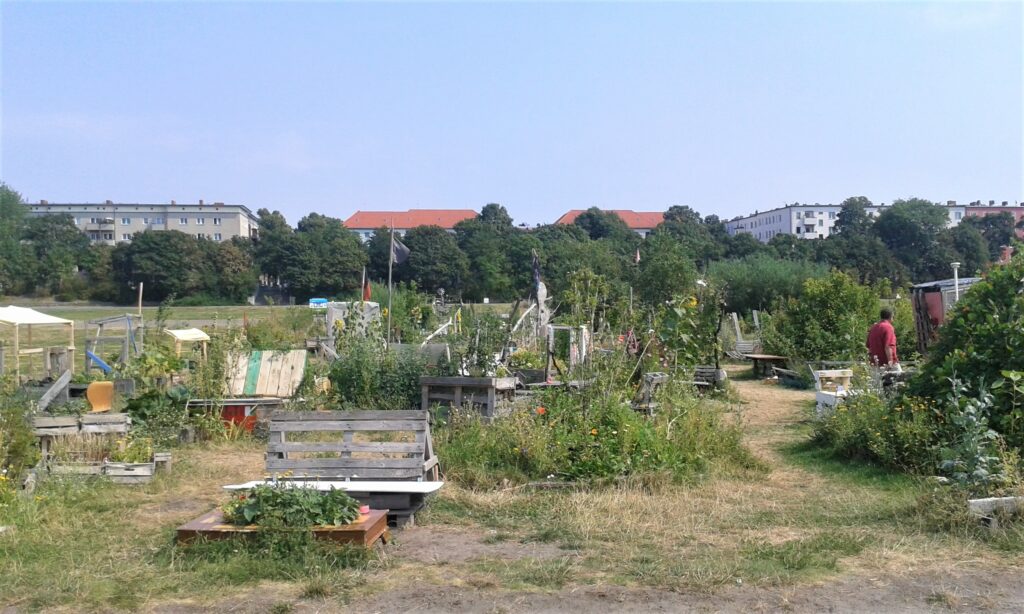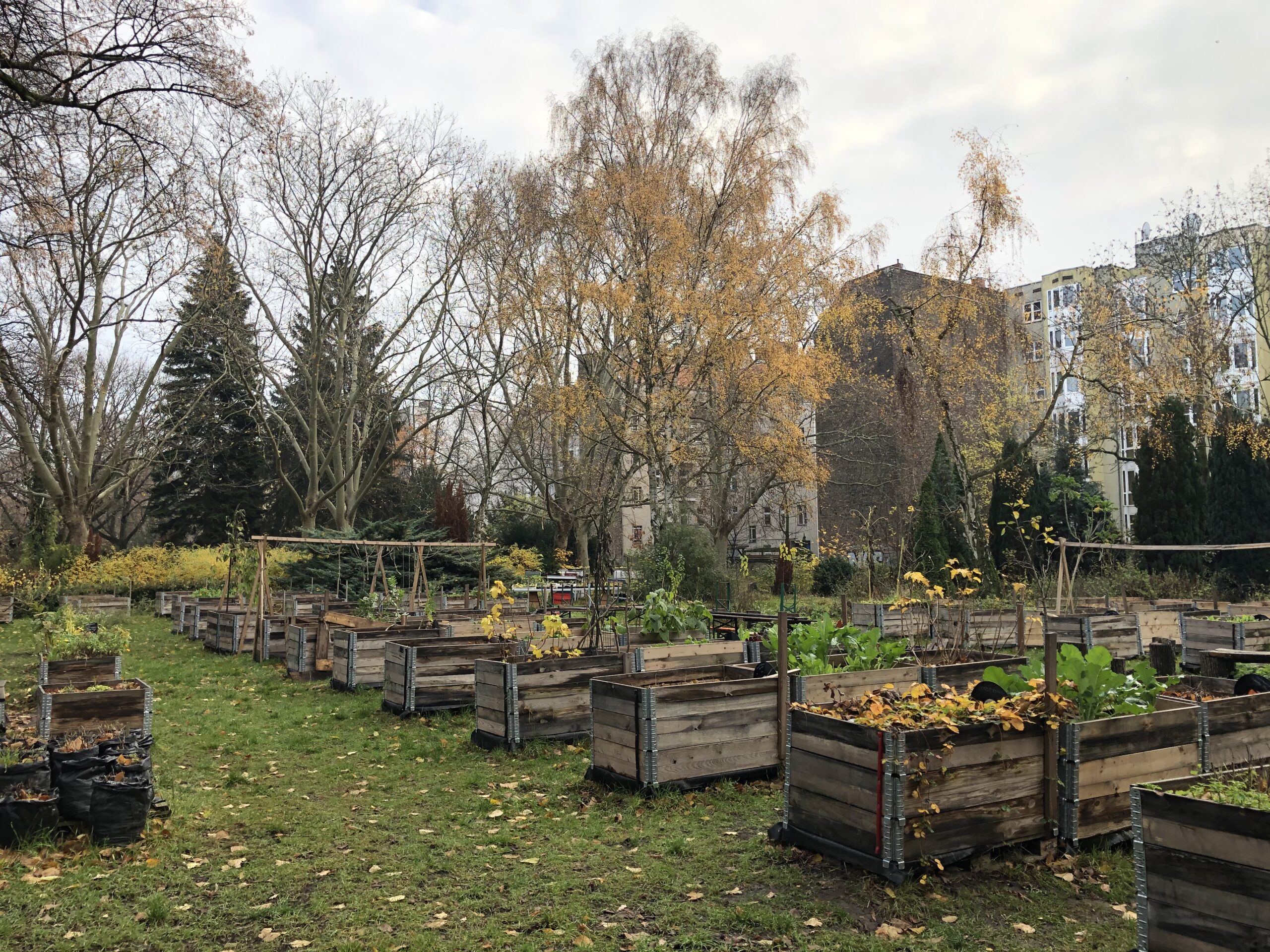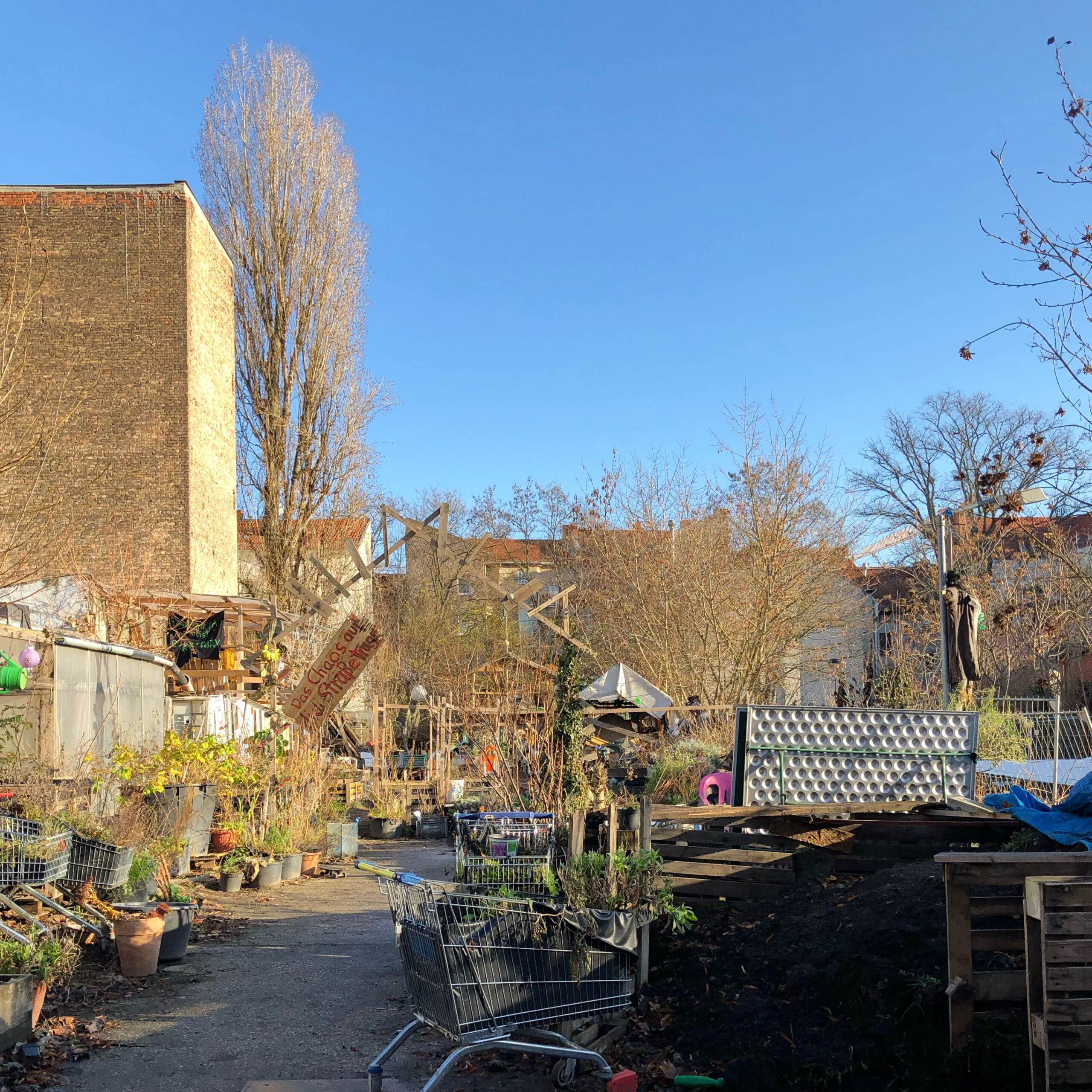
Community gardens are collectively cultivated gardens in which work and harvest are principally divided and the purpose of the community is paramount. They emerged as an urban garden form in disadvantaged neighbourhoods in New York and Detroit. Political initiatives, starting with the “Green Thumb” initiative in New York, have brought them out of illegality and now they established themselves worldwide (Karge, 2016, p. 54). Many community gardens are created on vacant or unused areas in cities. However, these are often only temporary uses and they have mostly insecure existence status (Biedermann & Ripperger, 2017, p. 17). Gentrification and surface pressure also threaten the gardens, because they are often located in the city centre. Critics also recognize the potential of community gardens to strengthen or trigger gentrification processes themselves (Rosol, 2006, p. 258).
Community gardens can be very diverse. Many of them have their own focus or individual form of organization (Veen, 2015, p. 17). As a result, a general definition is not possible (Grossauer, 2012, p. 23). However, there are some characteristics that can be seen as general. This includes horticultural use, community / collective management, the orientation towards the common good, public accessibility and low access barriers (Grossauer, 2012, p. 23; Rosol, 2006, p. 7 & 255; Veen, 2015, p. 17). They are usually created through civil society initiatives. Community gardens can be places of encounter and learning and have either social, political and ecological advantages. One variant, the Intercultural Garden, is focused on cultural exchange and thus contributes to integration and inclusion (Dietrich, 2014, p. 26).
Author: Leonie Sommer

Prinzessinnengärten at Moritzplatz, Berlin Kreuzberg 
Prinzessinnengärten at Neuer St. Jacobi Friedhof, Berlin Neukölln 
Prachttomaten community garden, Berlin Neukölln
Bibliography:
Biedermann, A. and Ripperger, A.L. (2017). Urban Gardening und Stadtentwicklung. Neue Orte für konflikthafte Aushandlungsprozesse um städtischen Raum. Springer Spektrum, p.17.
Dietrich, K. (2014). Urbane Gärten für Mensch und Natur. Eine Übersicht und Bibliographie. [online] Bundesamt für Naturschutz, Bonn – Bad Godesberg: Bundesamt für Naturschutz BfN, pp.27–30. Available at: www.bfn.de/fileadmin/BfN/service/Dokumente/skripten/Skript386.pdf [Accessed 23 Apr. 2020].
Grossauer, H. (2012). Freiraumorganisation im Nachbarschafts-und Gemeinschaftsgarten. [Bachelor Thesis] Universität für Bodenkultur, pp.23–27. Available at: http://www.gartenpolylog.org/sites/default/files/2019-01/Bakkarbeit_Grossauer_31_01_12.pdf [Accessed 23 Apr. 2020].
Toni, K. (2016). Neue Urbane Landwirtschaft: Eine theoretische Verortung und Akteursanalyse der Initiative Himmelbeet im Berliner Wedding. [online] Google Books, Berlin: Universitätsverlag der TU Berlin, p.54. Available at: https://books.google.de/books?hl=de&lr=&id=jHF5CwAAQBAJ&oi=fnd&pg=PP1&dq=himmelbeet+berlin&ots=aggXUBTL28&sig=FJCR06vLpMdYoJPVrVBNKs0c_MM&redir_esc=y#v=onepage&q=amandla&f=false [Accessed 23 Apr. 2020].
Rosol, M. (2006). Gemeinschaftsgärten in Berlin. [Dissertation Dr.rer.nat] pp.7, 258–260. Available at: https://www.agrar.hu-berlin.de/de/institut/departments/daoe/bk/forschung/klimagaerten/weiterfuehrende-materialien-1/2005_dissertation-zu-gemeinschaftsgaerten-in-berlin.pdf [Accessed 23 Apr. 2020].
Veen, E. (2015). Community gardens in urban areas: A critical reflection on the extent to which they strengthen social cohesion and provide alternative food. [PhD Thesis] pp.17–19. Available at: https://edepot.wur.nl/345279 [Accessed 23 Apr. 2020].
